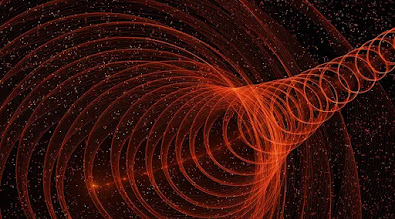Atoms vs apples: How quantum effects challenge gravity’s rules
International Conference on Nuclear Physics
“It is a result of numerous experiments that the trajectory of a freely falling body is independent of its internal structure and composition,” said Vyacheslav Emelyanov, professor of theoretical physics at the Karlsruhe Institute of Technology in Germany, in an email. “Accordingly, all bodies fall down to the Earth with the same acceleration. This result is known as the universality of free fall.”
The universality principle became an integral part of Newton’s theory of gravity, formulated back in the 17th century, and was included in Einstein’s general theory of relativity developed later on. Einstein’s theory is crucial in situations where gravitating bodies move at velocities close to the speed of light or when gravitational fields are exceptionally strong, such as those generated by black holes and neutron stars.
However, though Newton and Einstein’s theories have helped describe gravity on the scale of planets, stars, galaxies, and even the Universe as a whole, they are classical theories that do not take into account quantum effects, which are crucial to understanding the physics of atoms and elementary particles.
Do particles “fall” the same way?
In a recent study published in Annalen der Physik, Emelyanov sought to understand whether the principle of universality for free-falling objects remains valid even on these microscopic scales. To do this, he theoretically analyzed the trajectories of the elementary particles falling in a gravitational field, combining classical and quantum theories.
“We take into account that microscopic bodies are best described by quantum theory, while gravity is still due to spacetime curvature [as predicted by general relativity],” he explained.
According to quantum mechanics, in many aspects, particles can be best described not as point-like objects, but as waves spread through space, making the notion of a particle’s trajectory somewhat meaningless, particularly if it is free falling in a gravitational field.
Emelyanov found that waves with different masses did not “fall” the same way that classical particles are expected. Instead, they move with different acceleration under gravity, violating the principle of free fall universality.
“An atom falls down to the Earth faster than an apple,” he said. “Furthermore, different atoms fall with a different accelerations that depend on their composition. Our work thus gives a novel experimental channel for testing both quantum physics and gravity.”
Measuring the calculated correction to the acceleration of a macroscopic object when it moves in a gravitational field is challenging task. The quantum correction is typically so minuscule that it becomes practically impossible to detect, especially considering the large magnitude of the acceleration itself.
For example, for one gram of iron, the correction is more than 75 orders of magnitude less than the acceleration. However, when it comes to atoms, the situation changes since their significantly smaller masses make the correction comparatively more significant. In this context, measuring the correction becomes a potentially solvable experimental problem — with the right experimental set-up.
Future evidence
“The most promising technology for testing our result is atom interferometry, as it is designed to employ microscopic bodies,” said Emelyanov. “Here, one uses the wave nature of atoms to perform high precision measurements of the universality of free fall. It is, however, hard to say at the moment when exactly this technique will be advanced enough to test our finding with sufficient accuracy, either on the ground or in space.”
In addition to testing the principle of universality of free fall, Emelyanov’s result may future experimental studies, which are of paramount importance to our understanding of the quantum properties of fundamental interactions.
“There are plenty of theoretical arguments favoring the idea that gravity must also have quantum nature. It is therefore of interest to take quantum aspects of gravity into account by a self-consistent description of matter plus gravity,” said Emelyanov.
“It needs in particular to be described how gravity is sourced by quantum matter. This should open the way to the experimental understanding of quantum gravity in the lab,” he concluded.
#PeriodicTable#AtomicPhysics#Nucleus#Electrons#Protons#Neutrons#ValenceElectrons




Comments
Post a Comment